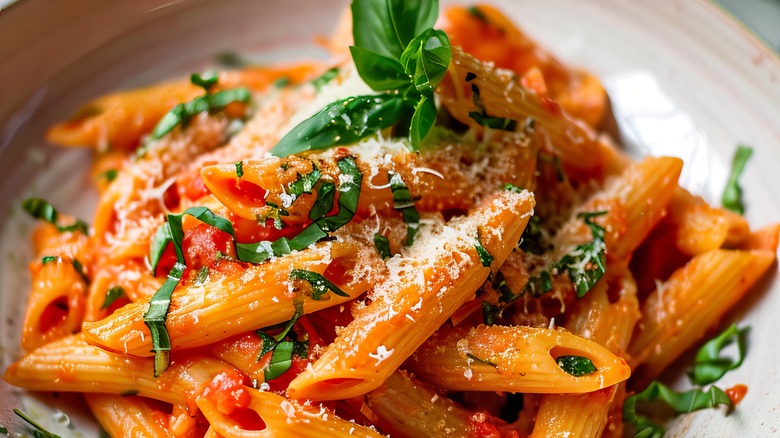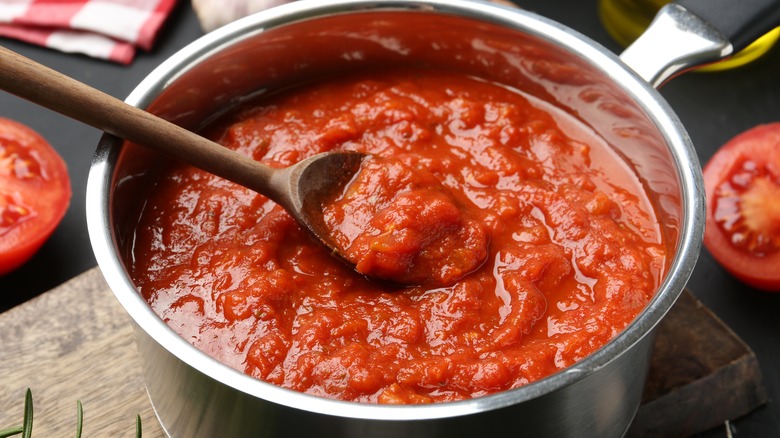Why You Should Add Vodka To Pasta Sauce Later In The Cooking Process
Penne alla Vodka is a classic Italian American pasta recipe for good reason. It's zesty and creamy, super satisfying, and easy to make — you can go from pan to table in less that 15 minutes. Yet as easy a recipe as it is, you might be tempted to leave out the vodka if you don't have it handy. But before you proceed, you need to know why it is in the recipe in the first place. Without it, you'll only end up with a nice marinara sauce, so if you want to elevate it to a whole new level, don't leave out the booze. And for best results, the trick is to add the vodka to the sauce toward the end of cooking. Adding the vodka with just a few minutes left ensures that you get all of the flavor-enhancing effects of the neutral spirit without making the sauce too boozy or bitter.
Vodka is a natural aroma enhancer and emulsifier, which gives the sauce its luscious texture and bright flavors. The alcohol brings out the fruitiness in the tomatoes and the pungency of the garlic while balancing the richness of the cream, and it also helps to bind the cream with the rest of the liquid so that your sauce doesn't break. It's a win-win situation.
Adding vodka or other alcohol to your pasta sauce
To get the best vodka sauce possible, you want to add the vodka about a minute before you mix the pasta with the sauce, then continue cooking for a few minutes to bind the sauce's ingredients and help it stick to the pasta. For best results, use to the amount of vodka called for in the recipe. If you want the sauce to have a stronger booze-forward flavor, you can add a little splash just before serving. Although as a neutral spirit it has no flavor of its own, you need a good quality vodka with no additives or artificial flavors or colors. Penne is the traditional pasta for the recipe since the shape holds the sauce in its interior and ridges, but you can use whatever shape you like or have in the pantry.
If you want to add another flavor to the sauce, you can choose a different spirit depending on the profile of your dish. You can try tequila or whiskey for a woodsy, earthy flavor; gin for extra herbal characteristics, mezcal if you want it a bit smoky, or wine to enhance the fruity acidity of the tomato, such as in this lobster spaghetti with white wine-tomato sauce. Remember that most of the alcohol will evaporate, but not before doing its job of intensifying the flavor and adding a silky creaminess to your pasta sauce.

